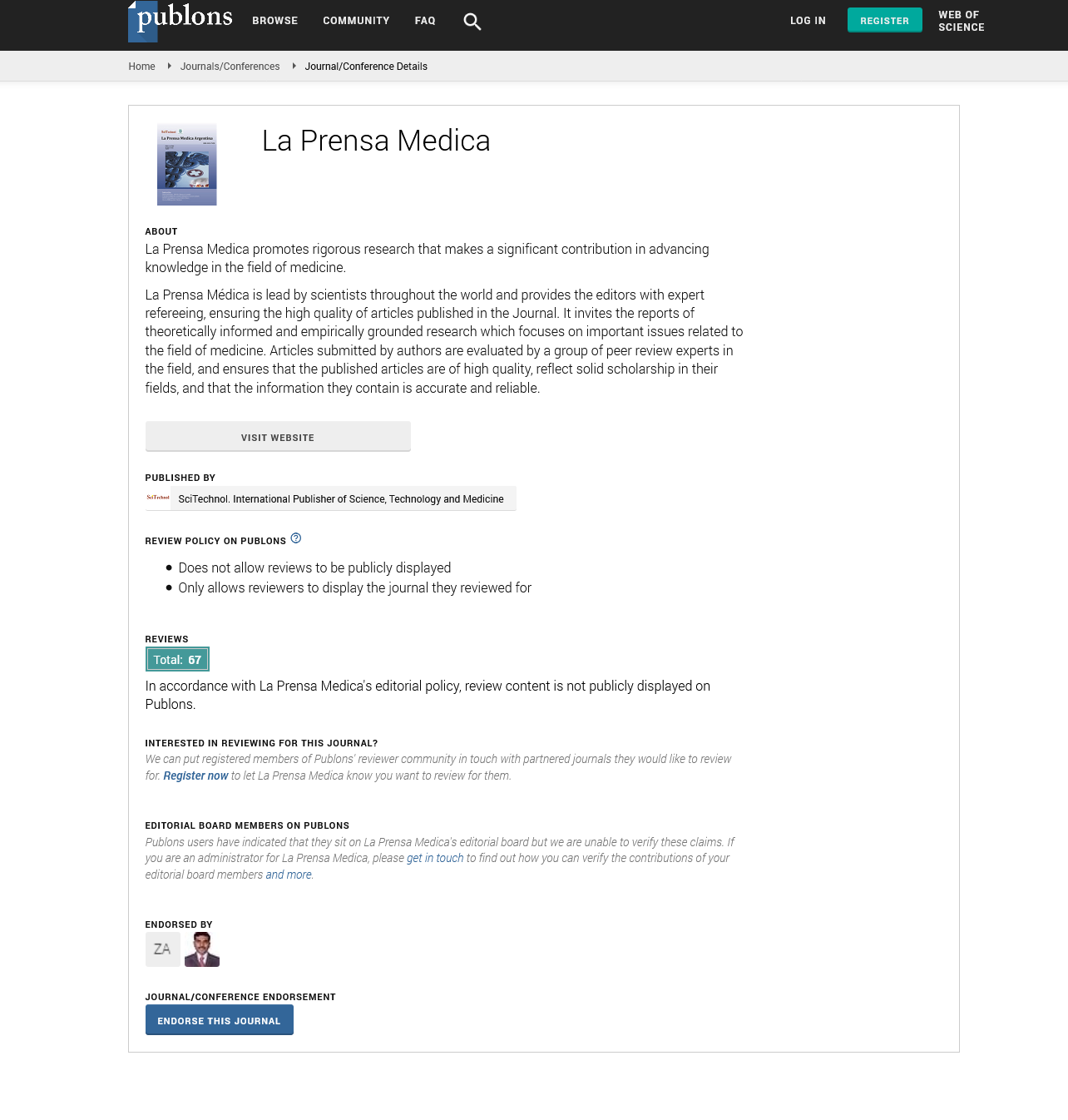Review Article, Prensa Med Argent Vol: 101 Issue: 1
Possible Role of the Transglutaminase-Catalyzed Reactions in the Pathogenesis of Neurodegenerative Diseases
Abstract
Possible Role of the Transglutaminase-Catalyzed Reactions in the Pathogenesis of Neurodegenerative Diseases
Transglutaminases are ubiquitous enzymes which catalyze posttranslational modifications of proteins. The main activity of these enzymes is the cross-linking of glutaminyl residues of a protein/ peptide substrate to lysyl residues of a protein/peptide co-substrate. In addition to lysyl residues, other second nucleophilic cosubstrates may include monoamines or polyamines (to form monoor bi-substituted/crosslinked adducts) or –OH groups (to form ester linkages). In absence of co-substrates, the nucleophile may be water, resulting in the net deamidation of the glutaminyl residue. Transglutaminase activity has been suggested to be involved in molecular mechanisms responsible for both physiological and pathological processes. For example, neurodegenerative diseases, such as Alzheimer’s disease, Parkinson’s disease, supranuclear palsy, Huntington’s disease and other polyglutamine diseases, are characterized in part by aberrant cerebral transglutaminase activity and by increased cross-linked proteins in affected brains. This review focuses on the possible molecular mechanisms responsible for such diseases and on the possible therapeutic effects of transglutaminase inhibitors for patients with diseases characterized by aberrant transglutaminase activity.
 Spanish
Spanish  Chinese
Chinese  Russian
Russian  German
German  French
French  Japanese
Japanese  Portuguese
Portuguese  Hindi
Hindi 

